Zidane commits crucial mistake, suffers defeat in El Clásico Christmas clash
This might be it for the La Liga title race. After yet another Barcelona win at Estadio Santiago Bernabéu, the Blaugrana can enjoy a comfortable lead, while some Blancos call for the head of coach Zinédine Zidane who thought man-marking Barça’s key players was the best strategy.
The story of the match can be concluded in a few sentences: Real Madrid started in dominant fashion and showed confidence in their ability to move the ball downfield. Somewhere during the first half, the momentum shifted towards Barcelona who then proceeded to see more of the ball and take more risks in possession. Coming out of the locker rooms, Madrid seemed to change their marking scheme which enabled Sergio Busquets and Lionel Messi to cause havoc. After the go-ahead goal by Luis Suárez, Barcelona continued to look comfortable in attack. Following a Dani Carvajal handball on the goal line, which led to his logical suspension from the game, Messi nailed the resulting penalty kick and sealed the deal.
Formations and macro-tactics
While no one had expected any surprises in the line-ups of either team in that kind of a high-profile match, both coaches had to make choices regarding who would be the fourth man in their respective midfield. Ernesto Valverde decided to give Paulinho another chance to prove the doubters wrong and fill in the vacant spot. In what looked like a 4-4-2/4-3-1-2 hybrid, the Brazilian midfielder repeatedly switched between the right side and no. 10 or even no. 9 spot. Meanwhile, Andres Iniesta was the left-sided midfielder on paper but was usually roaming through the left half-space giving Jordi Alba more freedom to advance.
Just like in their last encounter in the Supercopa, Zidane fielded Croatian midfielder Mateo Kovačić alongside Luka Modrić and Toni Kroos. While some expected him to be Messi’s shadow from kick-off onwards, Kovačić was allowed to play more freely at the top of the midfield diamond during portions of the first half. Cristiano Ronaldo, who was questionable up until match day, usually stuck to his preferred left side, but had the freedom to pick his spots up front, while Karim Benzema remained in the middle of the park before being substituted in the 66th minute.
Real Madrid, as usual, had the intention to start plays out of the left half-space and then get Ronaldo involved at some point, mostly on the left side. Overall, the Blancos had a higher rhythm and a more vertical style, although the differences between both teams are not as striking as they once were. Barcelona, still applying more possession-heavy macro-tactics, had to rely on the speed of the three highest players to get past Madrid’s back line, which created a comparatively chaotic match after the initial feeling-out process.
Compactness-oriented vs man-oriented
In the first 25 minutes or so, Barça’s pressing and the ability to keep the middle of the field tight was being tested. As Real Madrid was building up and using Kroos in the deep left half-space, Paulinho was coming forward and defending next to Messi and Suárez, so that he could interrupt the passing flow and block potential runs. As a consequence, Sergi Roberto had to come out of the back line and move close to Marcelo, whose position in the initial build-up was around the halfway line. Otherwise, the right-footed Kroos would have used the natural passing angle to let the ball travel to Madrid’s left-back, as Paulinho usually approached him coming from the right edge of Barça’s narrow midfield line and, was therefore not able to use his cover shadow to neutralise Marcelo.
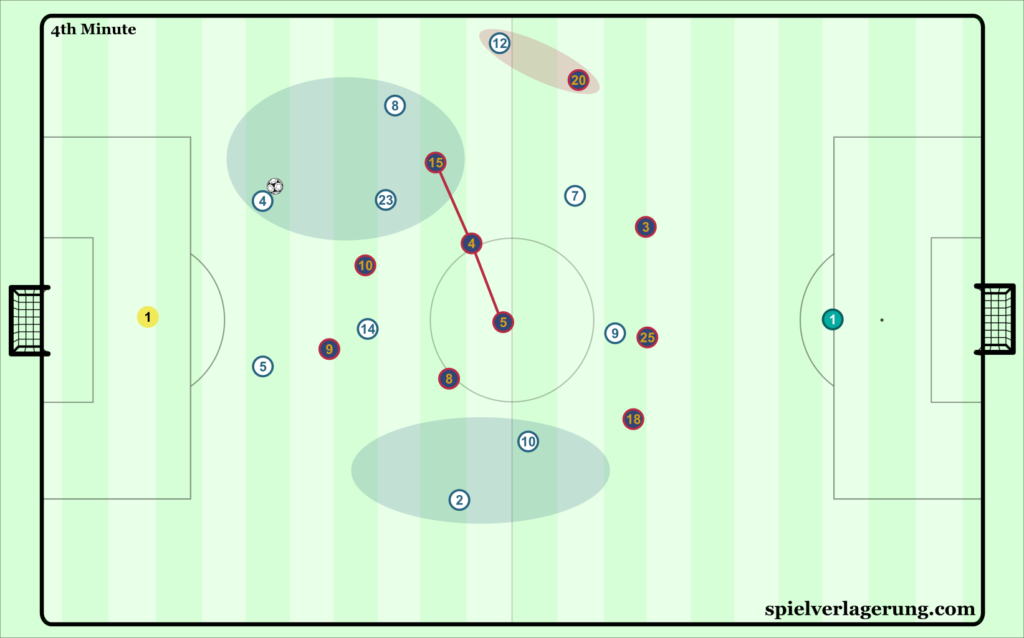
As Paulinho moved from the centre towards Kroos, he could not prevent passes towards Marcelo who had to be marked by Roberto. Modrić often drifted wide to receive a cross-field pass if Kroos or Ramos attempted one.
In general, Barça’s pressing appeared to be option-oriented throughout the match, which meant that the Valverde side did not allow giving up the compactness of their defensive shape by reacting to Madrid’s movement too strongly. For instance, Iniesta decided it was more important to keep the midfield line narrow and block the left half-space instead of chasing Modrić who frequently drifted wide in order to leave the crowded middle. The thought behind that defensive tactic was that it would be far more dangerous letting a few Madrid players—Kroos, Modrić and Ronaldo in particular—advance through the middle and attack the gaps between the single links of the two chains.
Madrid enjoyed some success throughout the first half by attacking through the left side and providing Ronaldo with the opportunity to either dribble into the middle or cross the ball. Barça stuck to their strategy and kept its line and the space between the lines tight, which made it almost impossible for Madrid to play any passes into the backfield once the hosts were close to the box. While Barça’s focus on zone occupation paid off, as they kept a clean sheet in the first half, the Catalans acted so passively in one-on-ones that they sometimes made it too easy for Madrid to dribble through the middle and final thirds. Granted, it was part of Valverde’s concept to not commit in any duels which would have caused significant trouble if they had been lost.
Both teams played with a back line, which made the field smaller and naturally created compression. Madrid’s centre-backs, for instance, usually did not drop behind the second dark-green strip in front of their box until Barça came through the first line of pressing and moved down the field. Sergio Ramos and Raphaël Varane positioned themselves wider than Gerard Piqué and Thomas Vermaelen on the other side of the pitch. While the Catalans intended to stay compact horizontally and keep control over the middle, Madrid wanted to defend over the width of the field, as at least Carvajal often stayed close to Varane, not advancing in order to keep an eye on Jordi Alba. Their wider positioning can be seen as a reaction to their own marking scheme, as it was naturally prone to let some of the midfielders being pulled out of position.
Slight momentum shift
Madrid applied a clear-cut man-marking scheme in their first phase of pressing: Benzema and Ronaldo vs the centre-backs, Kovačić vs Busquets, both no. 8s vs Iniesta and Ivan Rakitić, Casemiro vs Messi, Marcelo vs Roberto, and Varane vs Suárez. The hosts did not hesitate to move as high as the penalty area to apply said scheme and contain Barça’s build-up. Two opponents, however, were usually unmarked and used the freedom to their advantage. The first one was Marc-André ter Stegen who had several touches in the first half when the centre-backs and Busquets did not want to take the risk of trying dribbles close to their penalty area. ter Stegen, then, repeatedly attempted lob passes into the half-spaces who often found their target beautifully.
More than once, the target was Paulinho, the free radical in Barça’s attacking structure. The Brazilian was allowed to drift between the right side and the right half-space and position himself in the gaps of Madrid’s formation at first. Later, he was frequently present in the middle of the park, while Suárez moved wide luring Varane away from the middle. As Varane continued to man-mark the Uruguayan and Ramos only hesitantly started marking Paulinho tightly, he suddenly became the key player in this Clásico matchup.
His chance to score the first goal of the game in the 30th minute, as shown in the graphic below, emphasised how the momentum was slightly shifting towards his team. Madrid became increasingly tame when attacking. Zidane’s players comfortably advanced through the wings, but then struggled to do anything with their ball possession high up the field, as they could not create gaps to pass the ball into or through the middle, without just crossing it and hoping for the best. Consequently, Madrid turned the ball over several times, and Barça regained possession rather effortlessly, which allowed them to save more energy and to start attack after attack.
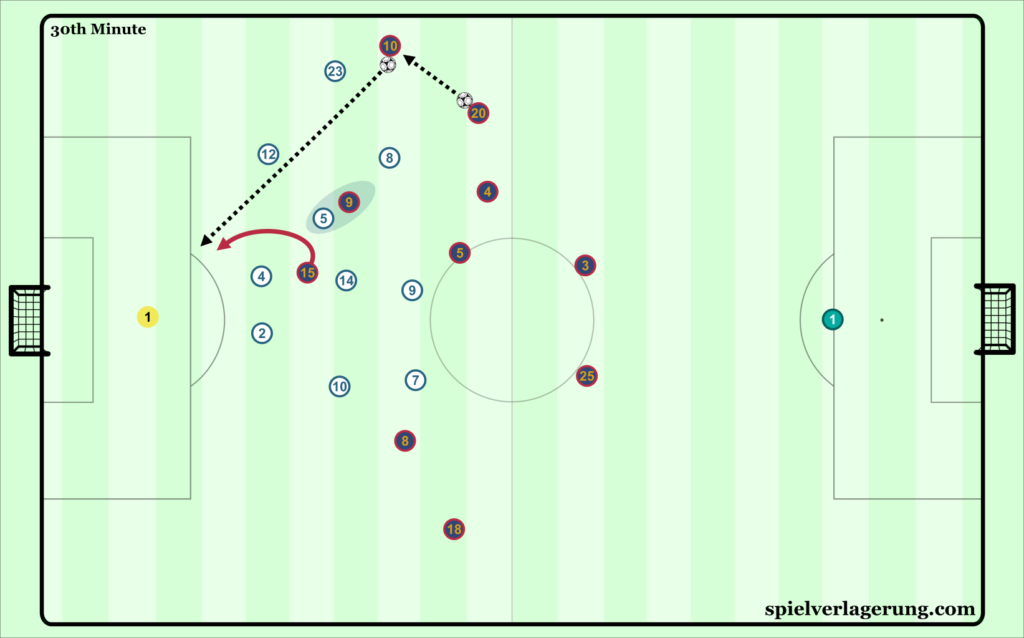
Again, man-marking did not help to maintain defensive stability. Varane followed Suárez into the no. 6 space, while Ramos looked suprised by Paulinho’s run. It is worth emphasising how well Paulinho and Messi communicated non-verbally, as the the Argentinian played at the exact moment the Brazilian started his run behind the opposing line.
Up until the half-hour mark, Madrid had a possession rate somewhere in the mid-50s but then lost control in the last 15 minutes of the half. That being said, there was a caveat attached to the fact that Barça became more dominant: it allowed Madrid to be more in their element, meaning they could counter-attack. Alba, in particular, started run after run down the left side, because Iniesta usually remained in the half-space to engage in the initial build-up. When Barça, however, lost the ball, Alba was often caught high up the pitch and could not chase back soon enough to shut down his side. Ronaldo began to move to that side and use the free space in Alba’s back.
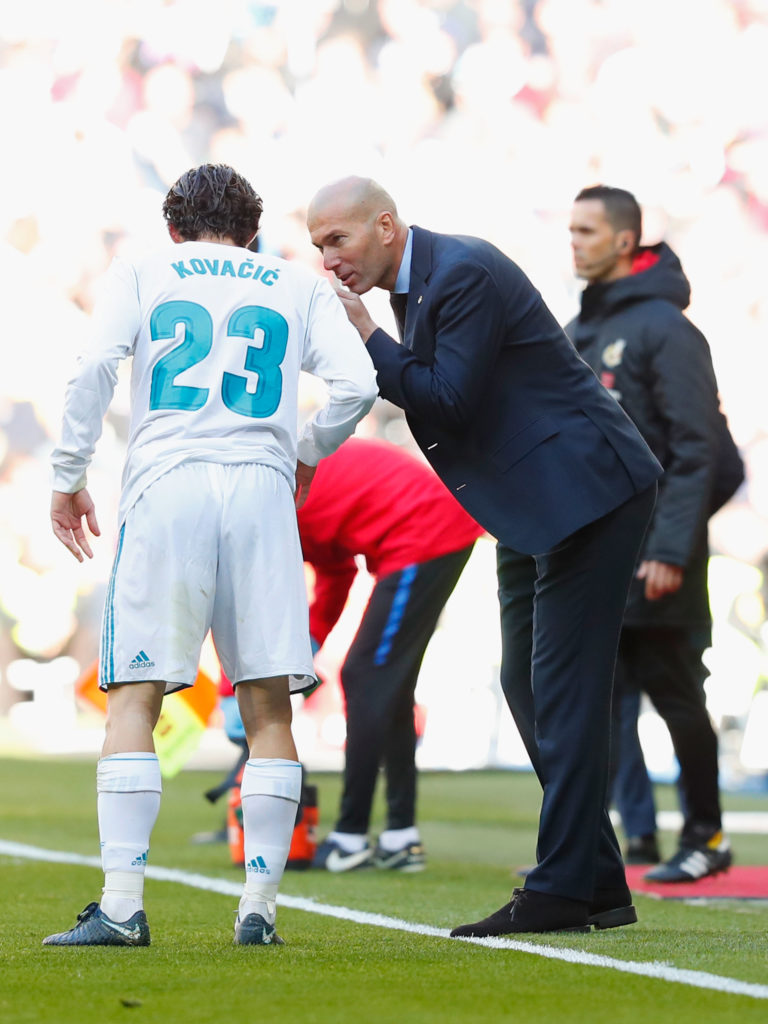
Zidane gives instructions to Kovačić during the match. (Photo by Gonzalo Arroyo Moreno/Getty Images)
Barça took that strategic risk deliberately, as the remaining defenders were still able to clean house. And if not, then ter Stegen or the goalpost helped keeping a clean sheet. What hurt the Catalans was the lack of presence behind Paulinho, Messi and Suárez in the middle of the field. The distance between their three midfielders and those three made it impossible to apply effective counter-pressing at times, which in return gave Madrid the possibility to accelerate in transition attacks and use Ronaldo almost to his full potential.
Zidane’s adjustments
It brings up the question whether it was necessary for Zidane to change anything during the half-time break. He, in fact, assigned Kovačić to follow Messi no matter what was happening around him. The Croatian did mark Barça’s star player at times during the first half, but he did it strictly after the interval, which led to situations in which Kovačić had to drop back and stand right next to Ramos and Marcelo. While Madrid played, in fact, with a back five, even though not by own choice, Paulinho roamed through the no. 10s space. Suddenly, Madrid faced a 3vs4 in midfield and found themselves at a disadvantage. Paulinho served as the main receiver in both half-spaces and tied up either Modrić or Kroos. As he became a rather clear right-sided midfielder in defence, Valverde gave him the option to change his position with diagonal runs once Barça had regained possession, either being in front of or behind Messi.
What helped Madrid was that Ronaldo and Benzema often defended more passively, just blocking the central zones, which lured both Piqué and Vermaelen into moving up and making the field narrower. Therefore, the gap behind Casemiro, who had to advance a bit in order to be close enough to Busquets or Iniesta in Madrid’s man-marking scheme, was not big enough to play a significant factor initially. If Messi decided to drop back, the middle third became even more crowded, which was a disservice to Barça’s attacking structure.
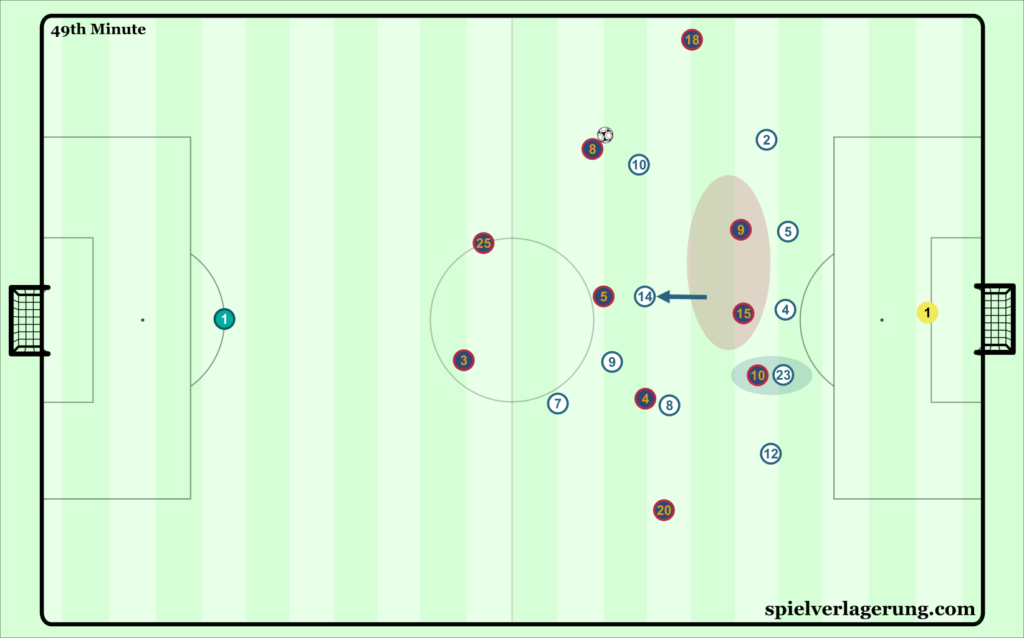
There was some space behind Casemiro but not much when Barcelona compressed the field by advancing with all ten outfield players.
Marching through the middle
What allowed Barça to score a brace and kill the match was the strictness with which Madrid stuck to their marking scheme. Prior to the first goal, the Blancos advanced trying to dispossess Roberto who was carrying the ball in Barça’s no. 6 space. He quickly gave it to Iniesta who forwarded the ball to Busquets. Kroos approached the Catalan playmaker to pressure him, but Busquets freed himself by doing a Cruyff turn. Rakitić started his run, leaving Modrić’s cover shadow. Once he received the ball, he ran for about 50 yards unchallenged, as Kovačić stayed at Messi’s side and did not shut down the middle of the park. Behind him, Roberto also advanced and created a 3vs2 at Madrid’s penalty area.
Some ten minutes later, the game was basically over, when Messi converted a penalty kick moments after Carvajal had been sent off. The reason Madrid got into trouble again had to do with Messi’s and Busquets’ backwards pressing before Pique could gain possession of the ball and march across the middle. Varane decided to mark Pique who had moved towards the offside line, while Suárez was the open man to receive a Messi pass and start a series of goal-scoring attempts before Carvajal chose to use his hand on the goal line.
Afterwards, Zidane brought in Nacho Fernández for Benzema to fill up his back line which was met with whistles in the Bernabéu. Later he replaced Casemiro and Kovačić with Marco Asensio and Gareth Bale to employ a 4-2-3 formation. Apart from a few chances which were either denied by ter Stegen or wasted, Madrid did not appear to be in the right state to make a comeback happen. Barça’s third goal scored by Aleix Vidal was just the icing on the cake for the victorious guests.
Conclusion
High-level football means one mistake can cause your team being shredded into pieces. Zidane demoted Kovačić to being Messi’s shadow as part of a strict man-marking scheme which gave Barça the freedom they needed. Valverde’s team smartly used vertical runs and overloads to expose Madrid’s mistake. In hindsight, there seemed to be no clear threat for Madrid to be concerned about after the first half. In fact, the Blancos might have had the opportunity to catch Barça on the break, but Zidane moved some of his pieces around, and the arch-rivals checkmated his side.


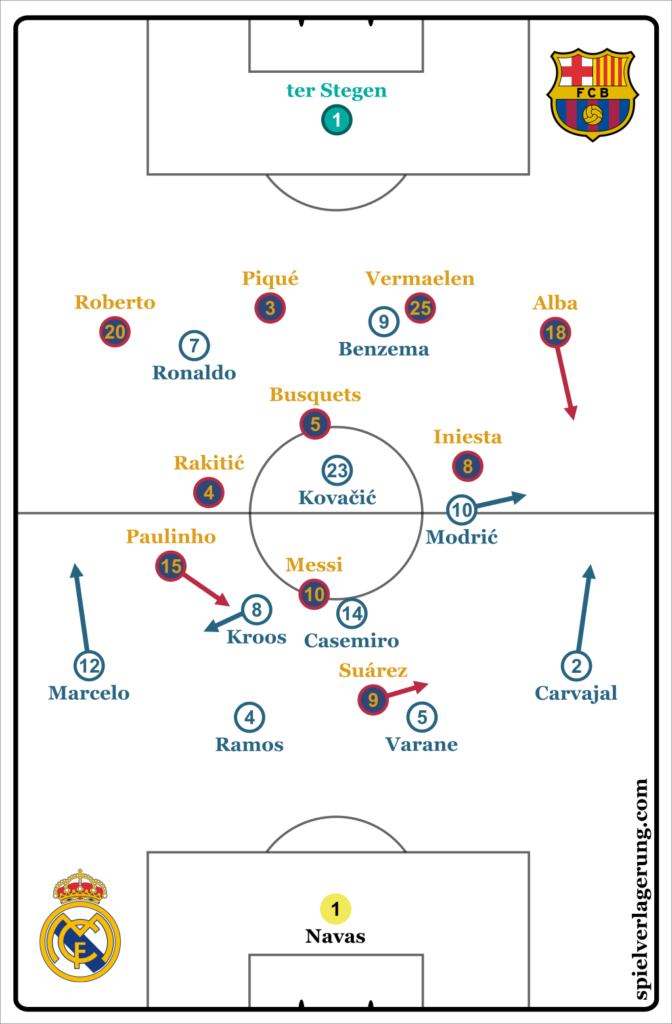
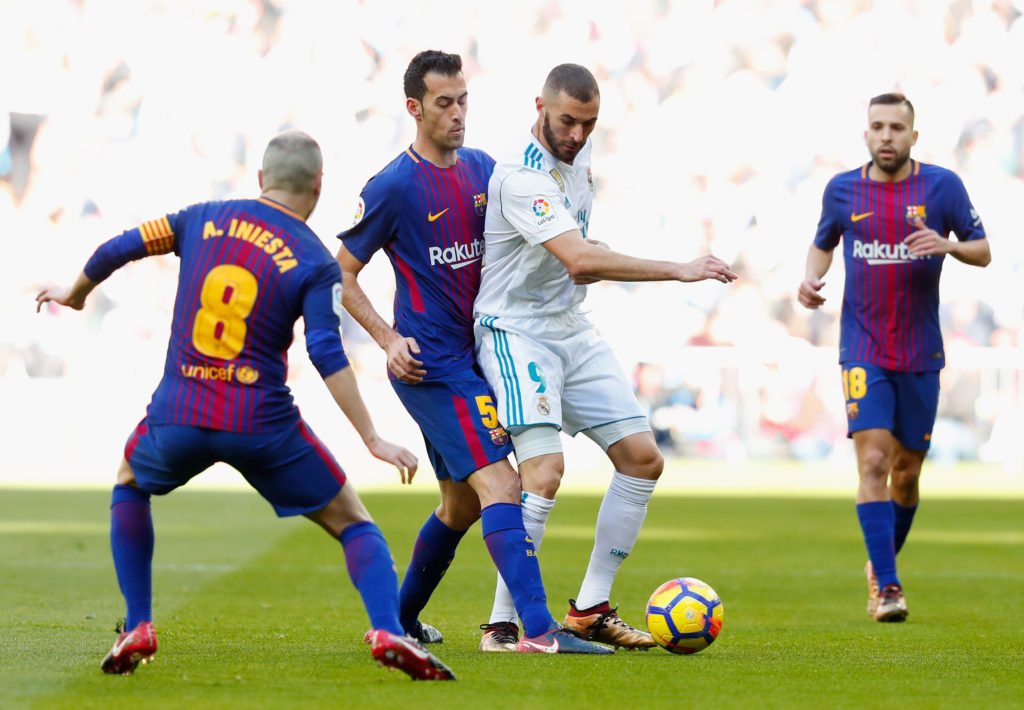
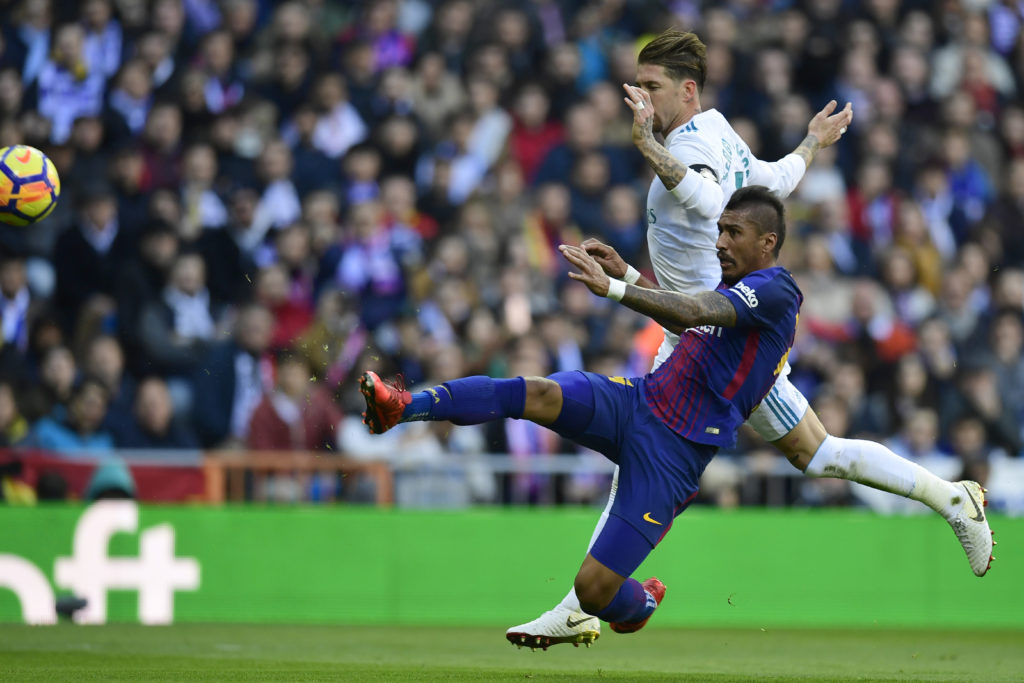
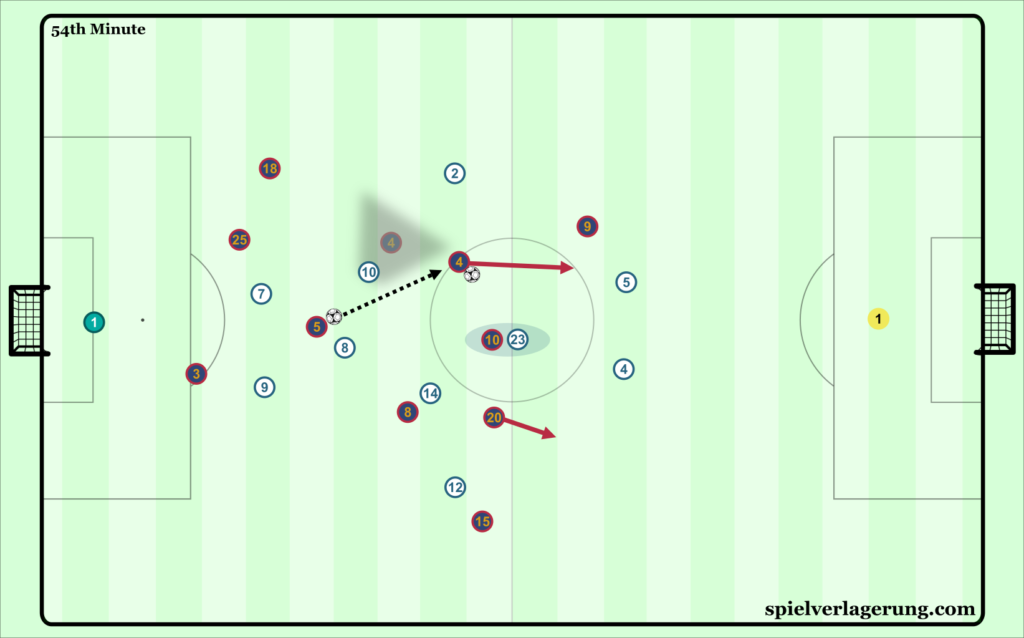
Keine Kommentare vorhanden Alle anzeigen